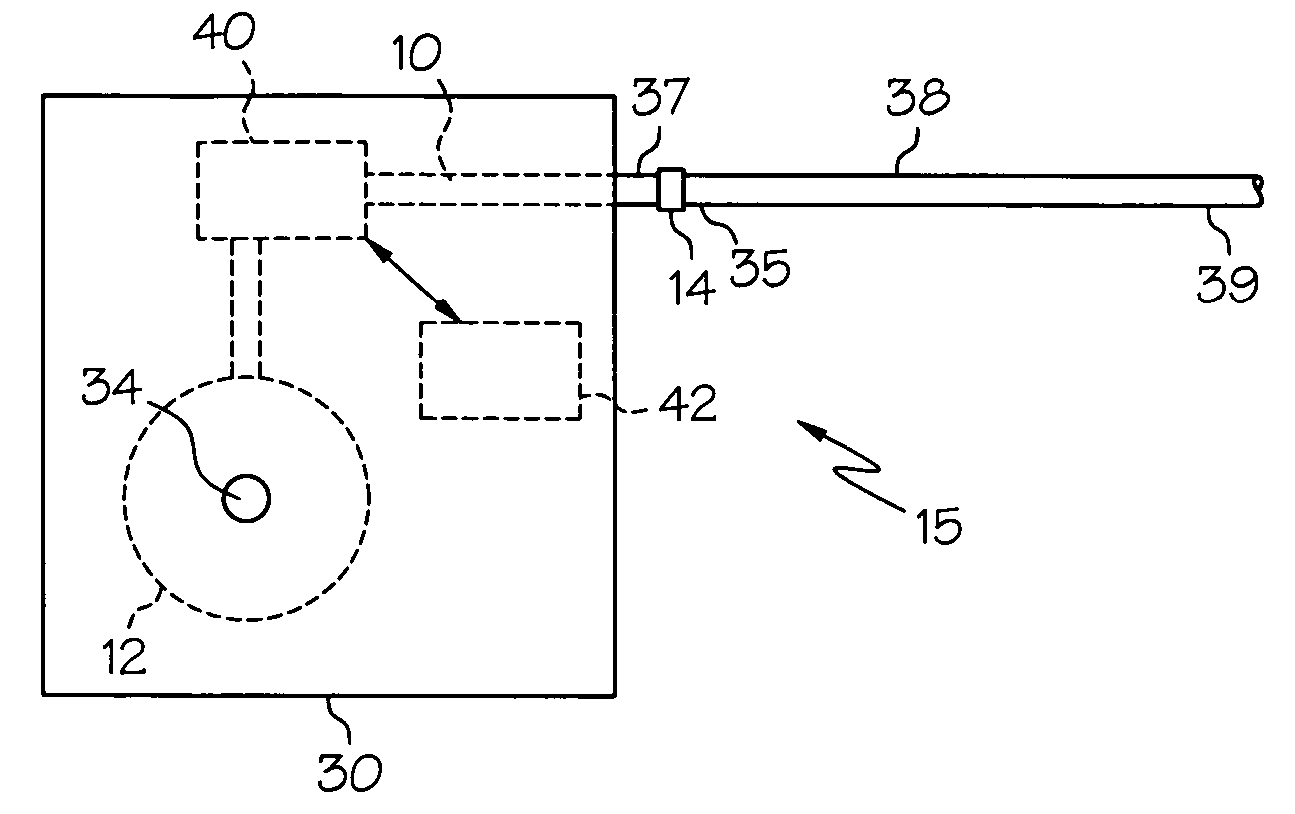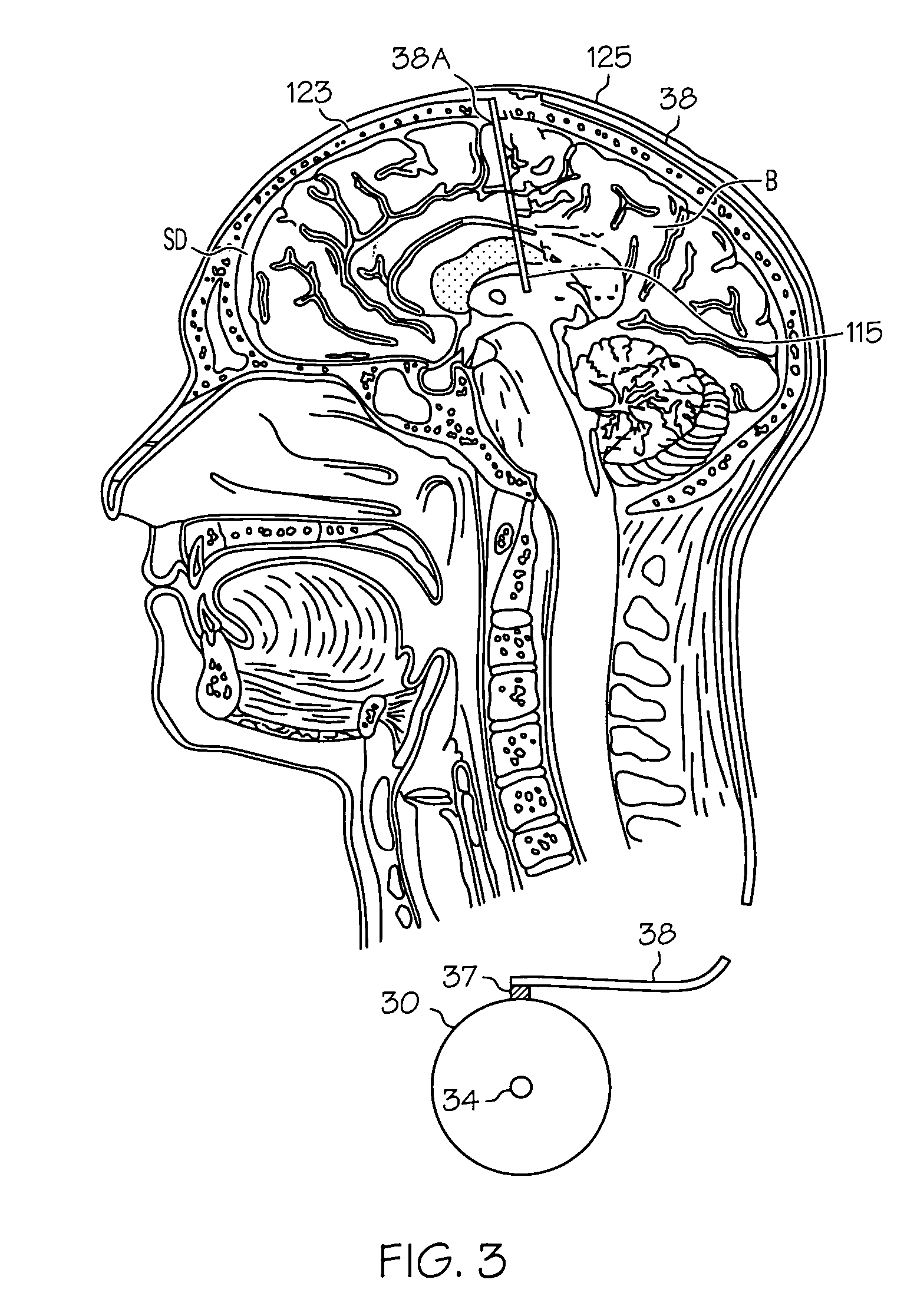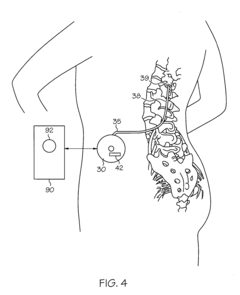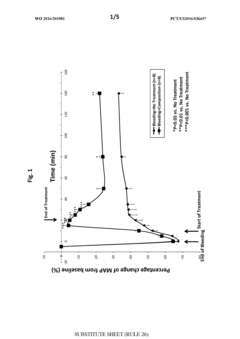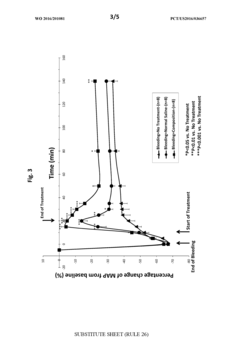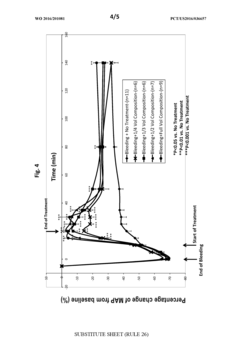How to Use Hypertonic Solutions Safely in Clinical Settings?
Hypertonic Solutions: Background and Objectives
Hypertonic solutions have been a cornerstone in medical practice for decades, playing a crucial role in various clinical settings. These solutions, characterized by their higher solute concentration compared to bodily fluids, have proven invaluable in managing a wide range of medical conditions. The primary objective of this technical research report is to explore the safe and effective use of hypertonic solutions in clinical environments.
The evolution of hypertonic solutions in medicine can be traced back to the early 20th century when researchers first recognized the potential of concentrated saline solutions in treating specific medical conditions. Over time, the applications of hypertonic solutions have expanded significantly, encompassing areas such as fluid resuscitation, management of intracranial pressure, and treatment of electrolyte imbalances.
In recent years, there has been a growing interest in optimizing the use of hypertonic solutions to enhance patient outcomes while minimizing potential risks. This renewed focus stems from an increased understanding of the physiological effects of these solutions on the human body, as well as advancements in medical technology that allow for more precise administration and monitoring.
The safe use of hypertonic solutions in clinical settings presents several challenges that need to be addressed. These include the risk of electrolyte imbalances, potential adverse effects on organ function, and the need for careful patient selection and monitoring. As such, a comprehensive understanding of the mechanisms of action, indications, and potential complications associated with hypertonic solutions is essential for healthcare providers.
This technical research report aims to provide a thorough examination of the current state of knowledge regarding the safe use of hypertonic solutions in clinical practice. By analyzing existing literature, clinical guidelines, and emerging research, we seek to identify best practices and potential areas for improvement in the administration of these solutions.
Furthermore, this report will explore the technological advancements that have contributed to the safer and more effective use of hypertonic solutions. This includes innovations in solution formulation, delivery systems, and monitoring technologies that enable healthcare providers to optimize treatment protocols and minimize risks to patients.
By addressing these objectives, we aim to contribute to the ongoing efforts to enhance patient safety and improve clinical outcomes in the use of hypertonic solutions. This report will serve as a valuable resource for healthcare professionals, researchers, and policymakers involved in the development and implementation of protocols for the safe use of hypertonic solutions in various clinical settings.
Clinical Demand Analysis
The clinical demand for hypertonic solutions in medical settings has been steadily increasing due to their effectiveness in treating various conditions. These solutions, characterized by higher solute concentrations than physiological fluids, are primarily used in managing cerebral edema, reducing intracranial pressure, and treating hyponatremia. The market for hypertonic solutions is driven by the rising prevalence of traumatic brain injuries, strokes, and other neurological disorders that require immediate intervention to prevent further damage.
In emergency departments and intensive care units, hypertonic saline solutions have become a crucial tool for managing life-threatening conditions. Their ability to rapidly increase serum osmolality makes them particularly valuable in situations where quick reduction of intracranial pressure is essential. This has led to a growing demand for standardized protocols and guidelines for the safe administration of hypertonic solutions in acute care settings.
The aging population in many developed countries has also contributed to the increased demand for hypertonic solutions. Elderly patients are more susceptible to conditions like hyponatremia, which can be effectively treated with controlled administration of hypertonic fluids. As the global population continues to age, the market for these solutions is expected to expand further.
In the field of perioperative care, hypertonic solutions have gained attention for their potential to improve fluid management during surgery. Their use in this context aims to reduce postoperative complications and enhance recovery times, driving demand in surgical departments and ambulatory care centers.
However, the clinical demand for hypertonic solutions is tempered by concerns about their safety profile. The risk of rapid shifts in electrolyte balance and potential adverse effects on renal function has led to calls for more research into optimal dosing strategies and monitoring protocols. This has created a parallel demand for advanced monitoring technologies and point-of-care testing devices that can provide real-time data on patient electrolyte levels and osmolality.
The pharmaceutical industry has responded to these clinical needs by developing a range of hypertonic solutions with varying concentrations and compositions. There is a growing market for pre-mixed, ready-to-use hypertonic solutions that minimize the risk of preparation errors and ensure consistency in clinical practice.
In conclusion, the clinical demand for hypertonic solutions is multifaceted, driven by their efficacy in critical care scenarios, the aging population, and expanding applications in perioperative medicine. However, this demand is accompanied by a need for enhanced safety measures, standardized protocols, and improved monitoring capabilities to ensure their optimal and safe use in diverse clinical settings.
Current Challenges in Hypertonic Solution Usage
The use of hypertonic solutions in clinical settings presents several significant challenges that healthcare professionals must navigate to ensure patient safety and optimal outcomes. One of the primary concerns is the risk of rapid shifts in fluid and electrolyte balance. Hypertonic solutions, by definition, have a higher osmolarity than body fluids, which can lead to rapid fluid shifts from intracellular to extracellular spaces. This sudden movement of fluid can result in cellular dehydration and potentially harmful changes in blood volume and pressure.
Another challenge lies in the precise calculation and administration of hypertonic solutions. The concentration and volume of these solutions must be carefully determined based on individual patient factors such as weight, existing fluid status, and underlying medical conditions. Even small errors in calculation or administration can lead to serious complications, including hypernatremia, hyperosmolar states, or central pontine myelinolysis in severe cases.
Monitoring patients receiving hypertonic solutions poses additional difficulties. Healthcare providers must maintain vigilant observation of vital signs, fluid balance, and electrolyte levels. The need for frequent laboratory tests and clinical assessments can be resource-intensive and may not always be feasible in all healthcare settings, particularly in emergency situations or resource-limited environments.
The potential for adverse effects on specific organ systems also presents a challenge. For instance, hypertonic saline solutions can have detrimental effects on renal function, potentially exacerbating pre-existing kidney problems or causing acute kidney injury in susceptible patients. Similarly, the impact on cardiovascular function, particularly in patients with heart failure or hypertension, requires careful consideration and management.
Furthermore, the lack of standardized protocols for the use of hypertonic solutions across different clinical scenarios complicates their safe implementation. While guidelines exist for certain conditions, such as the management of increased intracranial pressure, there is often variability in practice among institutions and individual clinicians. This inconsistency can lead to confusion and potential errors in patient care.
Lastly, the education and training of healthcare staff in the proper use of hypertonic solutions remain an ongoing challenge. Ensuring that all members of the healthcare team, from physicians to nurses, are well-versed in the indications, contraindications, and potential complications of hypertonic solution therapy is crucial for patient safety. The complexity of managing these solutions requires continuous education and updated protocols to reflect the latest evidence-based practices.
Existing Safety Protocols
01 Hypertonic solutions for medical treatments
Hypertonic solutions are used in various medical treatments, including wound healing, reducing edema, and managing intracranial pressure. These solutions have a higher solute concentration than body fluids, which can draw fluid out of tissues and cells through osmosis. This property makes them effective in treating conditions where fluid reduction is necessary.- Hypertonic solutions for medical treatments: Hypertonic solutions are used in various medical treatments, including wound care, respiratory therapy, and intravenous fluid administration. These solutions have a higher solute concentration than body fluids, which can help draw excess fluid from tissues and improve hydration in certain medical conditions.
- Hypertonic solutions in cell preservation and cryopreservation: Hypertonic solutions play a crucial role in cell preservation and cryopreservation techniques. These solutions help protect cells from damage during freezing and thawing processes by controlling osmotic pressure and preventing ice crystal formation.
- Hypertonic solutions for ocular applications: Hypertonic solutions are used in ophthalmology for treating various eye conditions. These solutions can help reduce corneal edema, manage intraocular pressure, and provide relief for dry eye syndrome by drawing excess fluid from the cornea and conjunctiva.
- Hypertonic solutions in agriculture and plant science: Hypertonic solutions have applications in agriculture and plant science, including seed priming, osmotic stress studies, and plant tissue culture. These solutions can help improve seed germination, enhance plant stress tolerance, and control cell growth in tissue culture experiments.
- Hypertonic solutions for industrial and environmental applications: Hypertonic solutions are utilized in various industrial and environmental applications, such as water treatment, desalination processes, and osmotic power generation. These solutions can help remove contaminants from water, concentrate solutions, and generate energy through osmotic pressure differences.
02 Hypertonic solutions in cell preservation and cryopreservation
Hypertonic solutions play a crucial role in cell preservation and cryopreservation techniques. These solutions help protect cells from damage during freezing and thawing processes by controlling ice crystal formation and cellular dehydration. They are particularly useful in preserving biological samples, organs, and tissues for research and medical purposes.Expand Specific Solutions03 Hypertonic solutions for nasal and respiratory treatments
Hypertonic saline solutions are used in nasal and respiratory treatments to alleviate symptoms of various conditions. These solutions can help clear nasal passages, reduce congestion, and improve mucociliary clearance in patients with respiratory disorders such as cystic fibrosis, sinusitis, and allergic rhinitis.Expand Specific Solutions04 Hypertonic solutions in agriculture and plant science
Hypertonic solutions have applications in agriculture and plant science, particularly in seed priming and stress tolerance studies. These solutions can be used to improve seed germination, enhance seedling vigor, and study plant responses to osmotic stress. They also play a role in developing drought-resistant crops and understanding plant water relations.Expand Specific Solutions05 Hypertonic solutions in biotechnology and fermentation processes
Hypertonic solutions are utilized in various biotechnology applications and fermentation processes. They can be used to control osmotic pressure in bioreactors, enhance product yield in microbial fermentations, and facilitate the extraction of intracellular compounds. These solutions also play a role in studying cellular responses to osmotic stress in microorganisms.Expand Specific Solutions
Key Players in Hypertonic Solution Industry
The use of hypertonic solutions in clinical settings is a mature technology with ongoing research and development. The market is in a growth phase, driven by increasing demand for advanced medical treatments and the rising prevalence of conditions requiring osmotic therapy. Key players like Medtronic, Inc., Novartis AG, and Becton, Dickinson & Co., Ltd. are investing in innovative delivery systems and formulations. Research institutions such as Institut National de la Santé et de la Recherche Médicale and universities are contributing to the scientific understanding of hypertonic solutions' safety and efficacy. The market size is substantial, with pharmaceutical companies like Wyeth LLC and Bristol Myers Squibb Co. developing new applications. Technological advancements focus on improving safety profiles, optimizing delivery methods, and expanding therapeutic applications.
Medtronic, Inc.
Novartis AG
Innovative Approaches in Hypertonic Therapy
- A therapeutic pump system delivering an injectable gabapentin composition with concentrations greater than 30 mg/mL, while maintaining a tonicity of less than 900 mOsm, thereby reducing tissue damage and allowing for longer intervals between refills, is developed.
- A composition comprising specific salts, natural or synthetic sugars, and a high molecular weight, non-ionic, hydrophilic polymer, which can be administered as a solid or liquid, effectively increasing intravascular volume and pressure, suitable for both therapeutic and prophylactic use, particularly in conditions like traumatic brain injury and hypovolemia, without causing renal impairment.
Regulatory Framework for Hypertonic Solutions
The regulatory framework for hypertonic solutions in clinical settings is a critical aspect of ensuring patient safety and treatment efficacy. In the United States, the Food and Drug Administration (FDA) plays a pivotal role in overseeing the use of hypertonic solutions. These solutions are classified as drugs and medical devices, subject to stringent regulations outlined in the Federal Food, Drug, and Cosmetic Act.
The FDA requires manufacturers to obtain approval through the New Drug Application (NDA) process for hypertonic solutions intended for therapeutic use. This process involves rigorous clinical trials to demonstrate safety and efficacy. For hypertonic solutions used in medical devices, such as dialysis machines, the 510(k) premarket notification pathway may be applicable, requiring manufacturers to demonstrate substantial equivalence to a legally marketed device.
Internationally, regulatory bodies such as the European Medicines Agency (EMA) and the World Health Organization (WHO) provide guidelines for the use of hypertonic solutions. The EMA's Committee for Medicinal Products for Human Use (CHMP) has issued specific guidance on the development of medicinal products for the treatment of acute heart failure, which includes the use of hypertonic saline solutions.
Healthcare facilities must adhere to strict protocols for the storage, preparation, and administration of hypertonic solutions. The Joint Commission, an accrediting body for healthcare organizations in the United States, has established standards for medication management that directly impact the use of hypertonic solutions. These standards include requirements for proper labeling, storage conditions, and staff training.
Pharmacovigilance systems play a crucial role in monitoring the safety of hypertonic solutions post-market. Healthcare providers are required to report adverse events associated with the use of these solutions to regulatory authorities. This ongoing surveillance helps identify potential safety issues and informs updates to clinical guidelines and regulatory requirements.
Clinical practice guidelines, developed by professional medical societies, provide evidence-based recommendations for the safe use of hypertonic solutions. For instance, the Society of Critical Care Medicine has published guidelines on fluid resuscitation in sepsis, which include recommendations on the use of hypertonic saline solutions.
Regulatory compliance also extends to quality control measures in the manufacturing process. Good Manufacturing Practices (GMP) regulations ensure that hypertonic solutions are produced consistently and meet quality standards. These regulations cover aspects such as raw material sourcing, production processes, and quality testing.
Patient Monitoring Techniques
Patient monitoring techniques play a crucial role in ensuring the safe administration of hypertonic solutions in clinical settings. These techniques involve continuous observation and assessment of various physiological parameters to detect any adverse reactions or complications that may arise during treatment.
One of the primary monitoring techniques is the regular measurement of serum electrolyte levels, particularly sodium. Hypertonic solutions can significantly alter the body's electrolyte balance, and close monitoring of sodium levels helps prevent hypernatremia or other electrolyte disturbances. Blood samples are typically drawn at predetermined intervals to assess these levels accurately.
Fluid balance monitoring is another essential technique. Healthcare providers carefully track fluid intake and output to prevent fluid overload or dehydration. This involves maintaining detailed records of intravenous fluid administration, oral intake, and urine output. In some cases, more invasive monitoring methods such as central venous pressure measurement may be employed to assess intravascular volume status.
Hemodynamic monitoring is critical for patients receiving hypertonic solutions, especially those with cardiovascular concerns. This includes regular assessment of blood pressure, heart rate, and cardiac output. Advanced monitoring techniques such as arterial line placement or pulmonary artery catheterization may be utilized in high-risk patients to provide real-time hemodynamic data.
Neurological status monitoring is particularly important when using hypertonic solutions to manage conditions like cerebral edema. Regular neurological examinations, including Glasgow Coma Scale assessments and pupillary responses, help detect any changes in mental status or intracranial pressure.
Continuous electrocardiogram (ECG) monitoring is often employed to detect any cardiac arrhythmias that may occur due to rapid shifts in electrolyte concentrations. This is especially crucial in patients with pre-existing cardiac conditions or those receiving high concentrations of hypertonic solutions.
Respiratory monitoring techniques, including pulse oximetry and capnography, are used to assess oxygenation and ventilation status. These are particularly important in patients at risk of pulmonary edema or those with compromised respiratory function.
Advanced monitoring techniques may include the use of bioimpedance analysis to assess fluid distribution within the body, or near-infrared spectroscopy to monitor cerebral oxygenation in patients with neurological conditions.
Implementing a comprehensive patient monitoring protocol that incorporates these techniques allows healthcare providers to detect and respond to any adverse effects promptly, ensuring the safe and effective use of hypertonic solutions in clinical practice.
